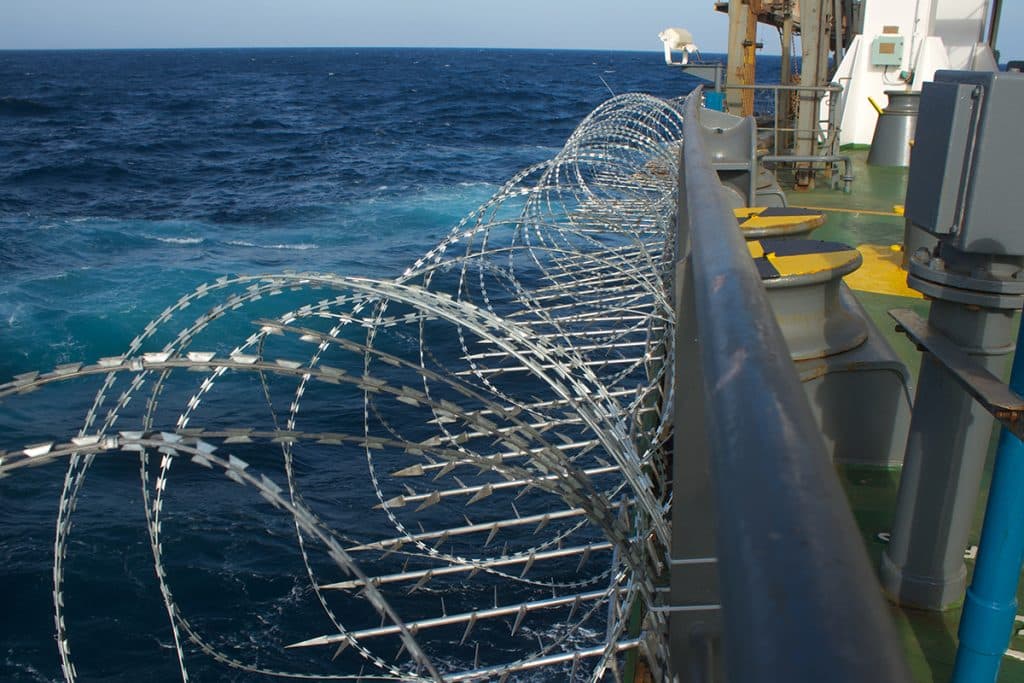The Horn of Africa hosts an unlikely mix – pirates threaten shipping lanes, foreign militaries jockey for influence, and international relations are tested. Its waters could seem an unlikely place to find an insight into economics, but Somali pirates, long viewed solely through the lens of criminality, offer a compelling – if controversial – case study in free market principles and entrepreneurial spirit.
Dean Mikkelsen, a defense and security expert, argues that these maritime marauders demonstrate key economic concepts in action. “Somali pirates offer a compelling, albeit controversial, example of free-market economics in action,” he told Arabian Business.
“Operating in the absence of a formal state, they have created a sophisticated shadow economy, complete with its own ‘stock exchange’ in the town of Harardheere.”
Somali pirates’ self-organised governance
This pirate stock exchange, while its exact nature is debated, represents a crude form of venture capitalism. Local investors can fund piracy operations by contributing cash, weapons, or other resources, with the promise of a share in ransom profits. It’s a high-risk, high-reward proposition that mirrors traditional stock markets, where investors buy shares in ventures expecting returns on their investments.
The pirates’ approach to setting ransom demands showcases a nuanced understanding of market forces. “Pirates demonstrate a high degree of economic rationality in setting ransom amounts. They carefully consider the value of the captured ship and cargo, the nationalities of the hostages, which can influence the likelihood of payment, and the operational costs associated with the hijacking,” Mikkelsen explained.
This rational actor model extends to risk assessment. Pirates factor in external threats such as naval patrols and potential military interventions, adjusting their ransom demands to reflect increased danger or potential losses. It’s a stark reminder that even in illicit markets, participants respond to incentives and disincentives in predictable ways.
The emergence of this shadow economy also offers insights into how markets can self-organise in the absence of formal governance structures. “The establishment of the Pirate Stock Exchange shows how, in the absence of a functional state, Somali pirates have built an organised economy that supports their activities,” Mikkelsen said.
This form of self-governance extends to community involvement, with piracy often viewed as a collective enterprise benefiting the local population through reinvestments in public infrastructure.

Piracy as a rational choice
Anja Shortland, professor of Political Economy at King’s College London and author of books on ransom negotiation, told Arabian Business that piracy has emerged as a “rational economic choice” for many in Somalia.
“What we’re dealing in Somalia with an environment where lots of people are unemployed, underemployed, where life isn’t particularly precious.”
Shortland highlighted the importance of understanding the pirates’ perspective. “I teach the economics of crime, and what I’m always doing is to invite my students to put themselves into other people’s boots, and look at the world from their point of view.”
From this vantage point, piracy offers financial opportunities and status in an environment where legitimate alternatives are scarce. The risk-reward calculation, when compared to other dangerous occupations available in the region, can make piracy an attractive option.
The pirates’ operational methods also reflect a sophisticated understanding of risk management.
“The way that the attacks were conducted, it was also pretty non-violent. You show some force, and then if you get feedback, then you withdraw. You only go in if you realise that the target’s pretty much undefended,” said Shortland.
This cautious approach minimises risks to the pirates themselves, creating a business model that, while illegal, is designed for sustainability. The use of hostages as human shields further reduces the likelihood of violent confrontations with law enforcement. This has effectively created a deterrent against rescue attempts.

Ransom negotiations
The ransom negotiation process itself offers lessons in game theory and behavioural economics. Shortland explained that both sides understand it as a purely business transaction, with the pirates’ future success dependent on maintaining a reputation for releasing hostages once payments are made. This creates a strange form of trust in an otherwise lawless environment.
These economic principles are vividly illustrated by several high-profile piracy incidents off the Somali coast. In 2008, the Ukrainian cargo ship MV Faina was hijacked, with pirates initially demanding a staggering $20 million ransom. This ambitious opening bid kickstarted months of intense negotiations, demonstrating the complex bargaining processes typical in these illicit transactions.
An even more extreme case unfolded with the hijacking of the Sirius Star in November 2008. This Saudi-owned supertanker was carrying 2 million barrels of crude oil valued at over $100 million at the time. The pirates initially demanded $25 million for the release of the ship and its 25-member crew. After two months of negotiations, the ship and crew were released for a reported ransom of $3 million. This incident was particularly notable due to the sheer size of the vessel – at 330 metres long, it was the largest ship ever hijacked by Somali pirates – and the value of its cargo. The case highlighted the pirates’ ability to target high-value assets and their willingness to engage in protracted negotiations to maximise their returns.
Another significant case was the hijacking of the Greek-owned oil tanker Maran Centaurus in November 2009. The vessel was carrying about 2 million barrels of crude oil worth approximately $150 million at the time, making it one of the most valuable ships ever seized by pirates. The ship and its crew of 28 were held for nearly two months off the Somali coast. After intense negotiations, the ship and crew were released in January 2010 for a reported ransom of between $5.5 million and $7 million, although the exact figure was not officially confirmed.
However, the piracy market isn’t without its disruptions. Shortland highlighted that non-professional negotiators entering the fray have destabilised previously established norms.
“What was different in the Somali case was that this agreement, this idea that it was going to take three months and cost $200,000 was broken by non-professional associations coming in and saying, ‘We don’t want to wait for three months. How can I keep my crew in this horrible situation? I’m happy to pay a million, but I want them back now.'”
This willingness to pay higher ransoms created market instability, driving up prices and attracting more entrants to the piracy “industry.” It’s a vivid illustration of how external actors can disrupt even the most unconventional markets.
“That just creates a lot of confusion. A lot would say well, if you’re happy to pay a million, are you happy to pay two? What about three, five, or eight million? So it became really unstable and then the more people understood that there’s so much money on the table, they think, ‘well, I’m going to try this’,” she added.

Piracy remains a serious crime
The Somali piracy phenomenon also demonstrates the power of incentives in shaping behaviour. When private security companies began effectively defending ships, piracy incidents dropped dramatically.
“Since the advent of private security companies, we’ve seen a few test balloons. Are they still there? Are they still being defended in the way that they were? And if the answer is yes, they just back off,” she explained.
This rapid response to changed market conditions mirrors how legitimate businesses adapt to new regulations or competitive threats.
While it’s crucial to remember that piracy remains a serious crime with real victims, the economic patterns it reveals are undeniably fascinating. The pirates’ ability to organise, self-govern, and even innovate within their shadow economy offers insights into both the potential and dangers of truly unregulated markets.
“Overall, the operations of Somali pirates provide a dark but fascinating look into how economic principles like rational choice, risk management, and market dynamics play out in a lawless environment,” Mikkelsen said.
The lesson from the Somali coast isn’t that piracy should be condoned, but rather that economic principles are universal – applying even in the most unexpected and challenging environments.









